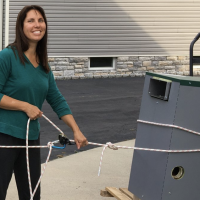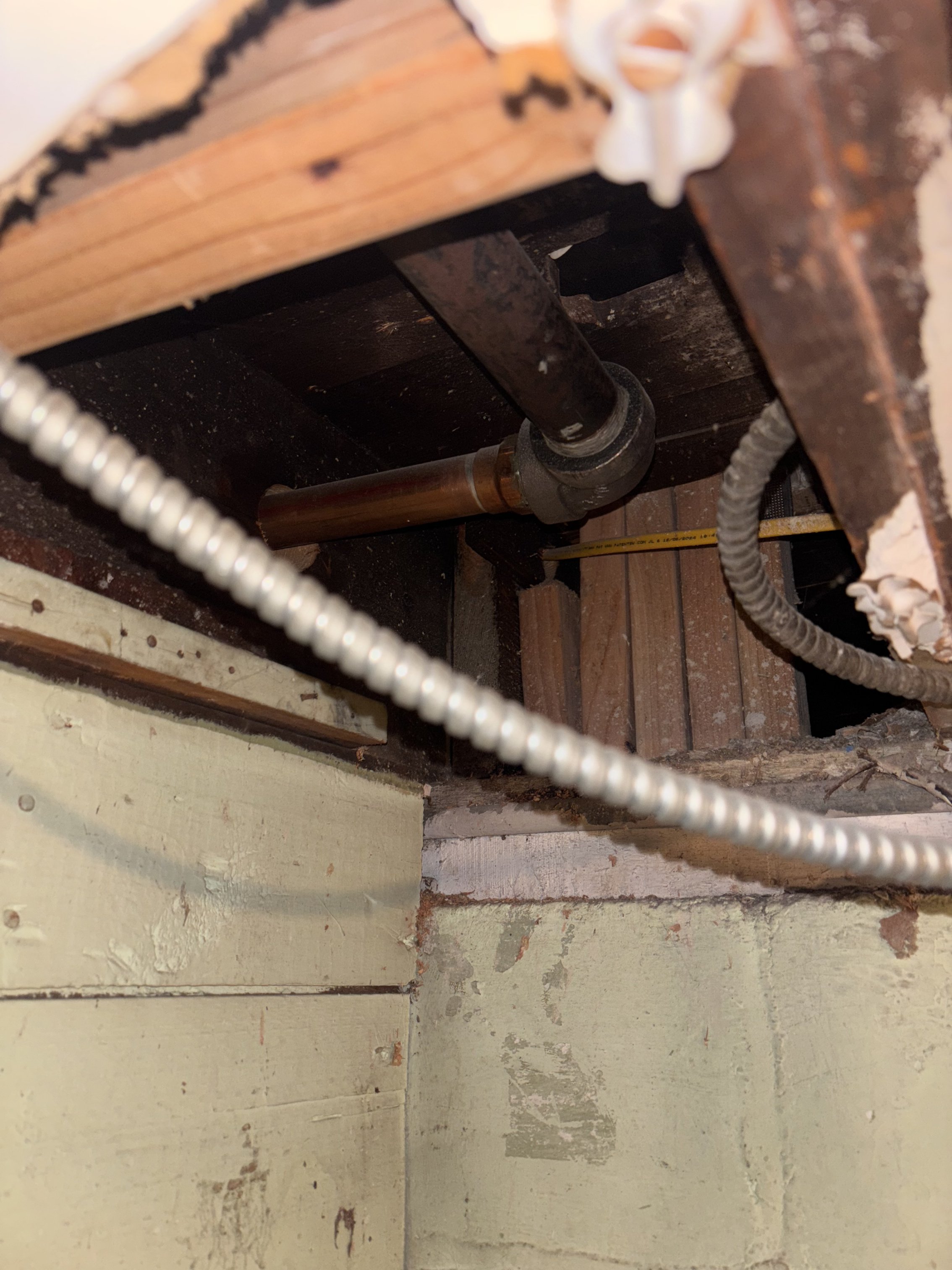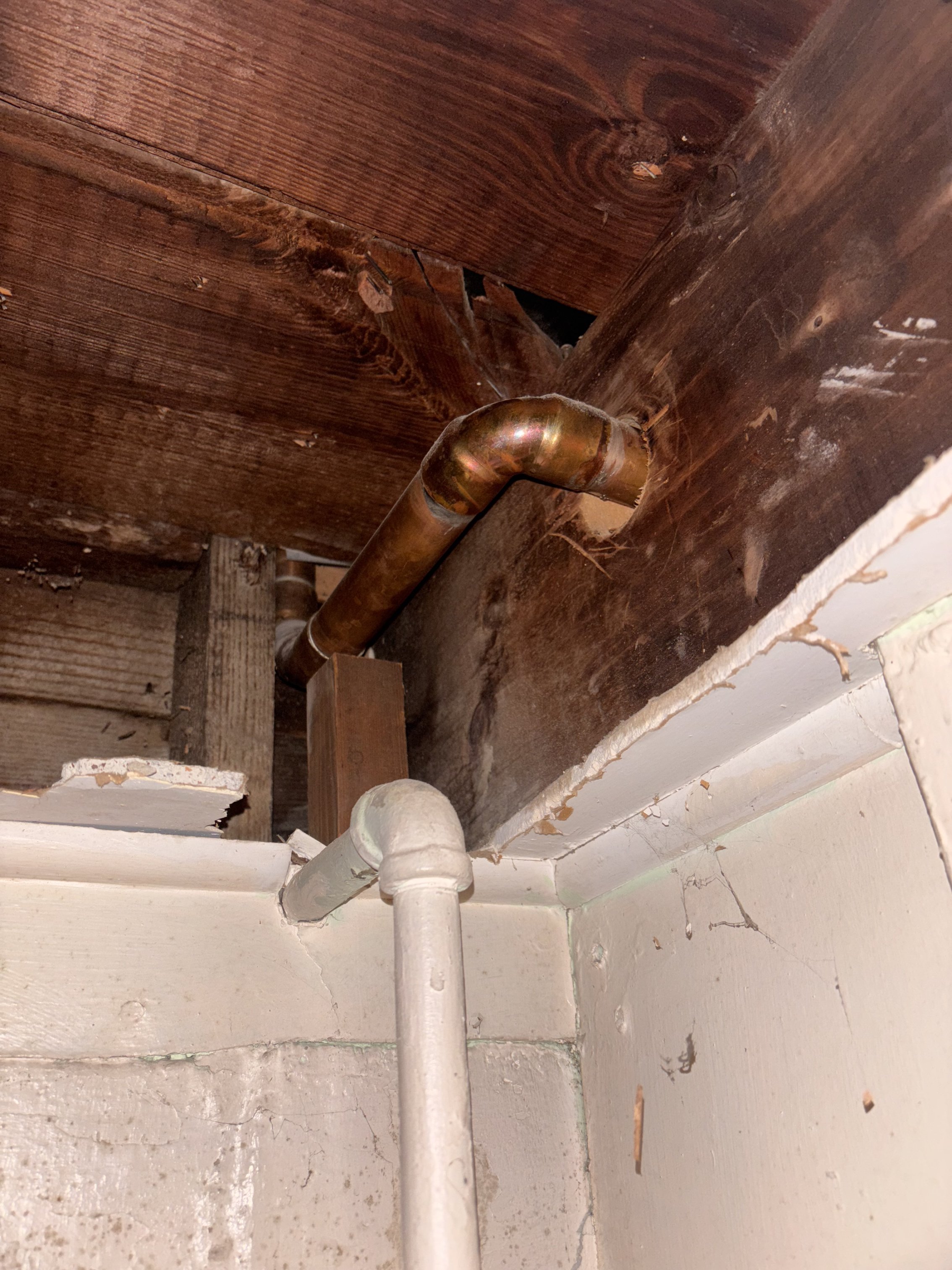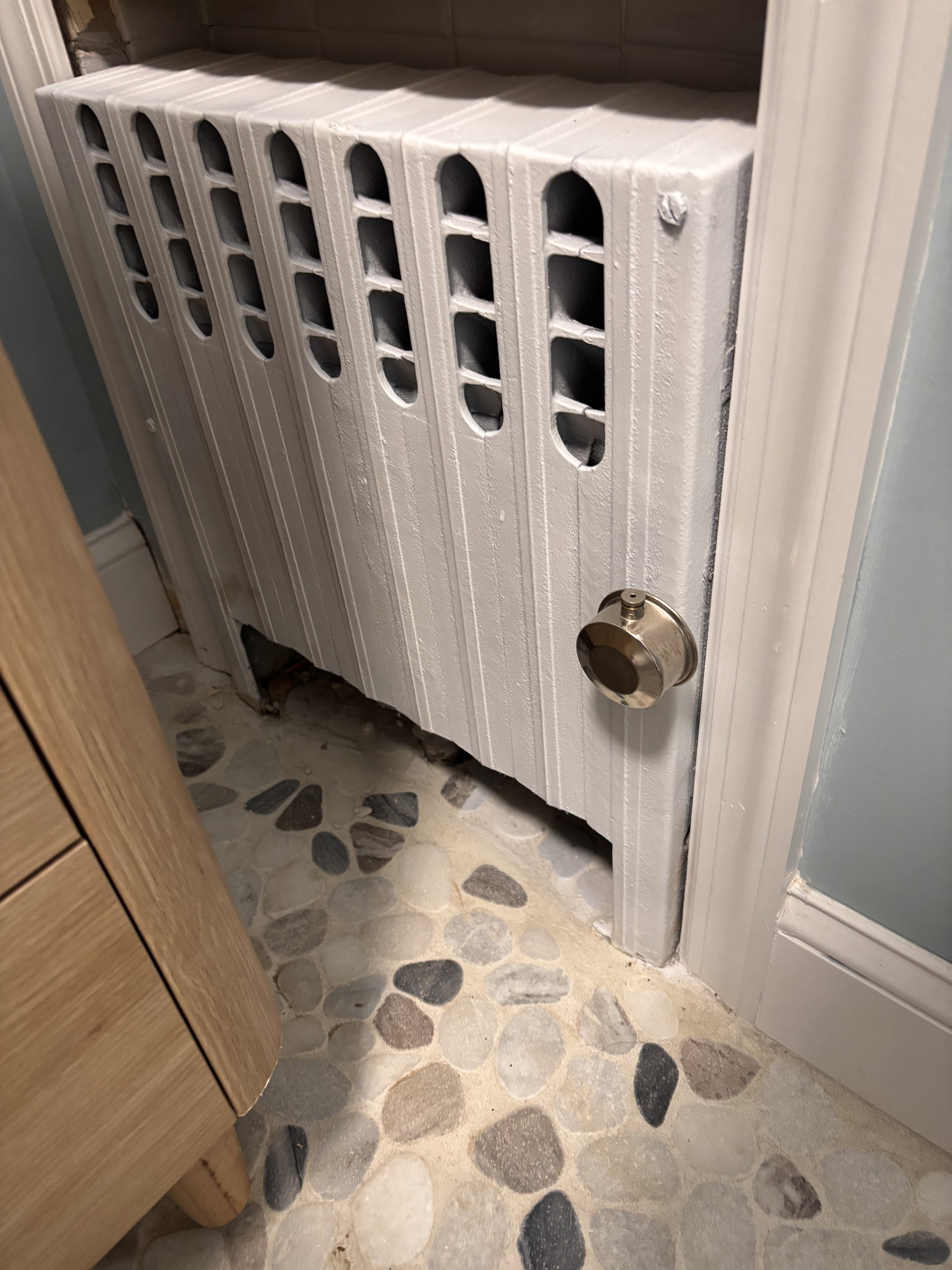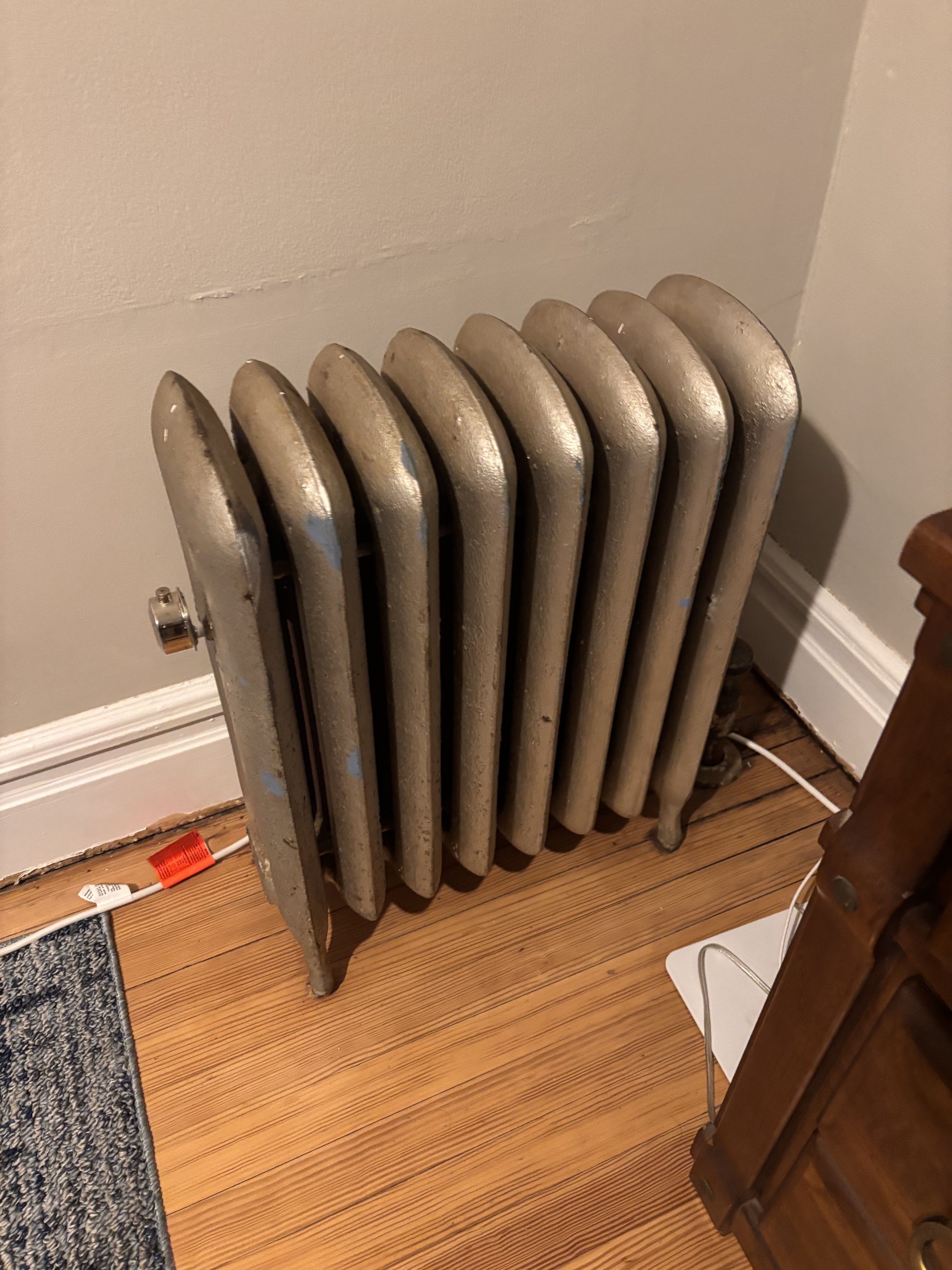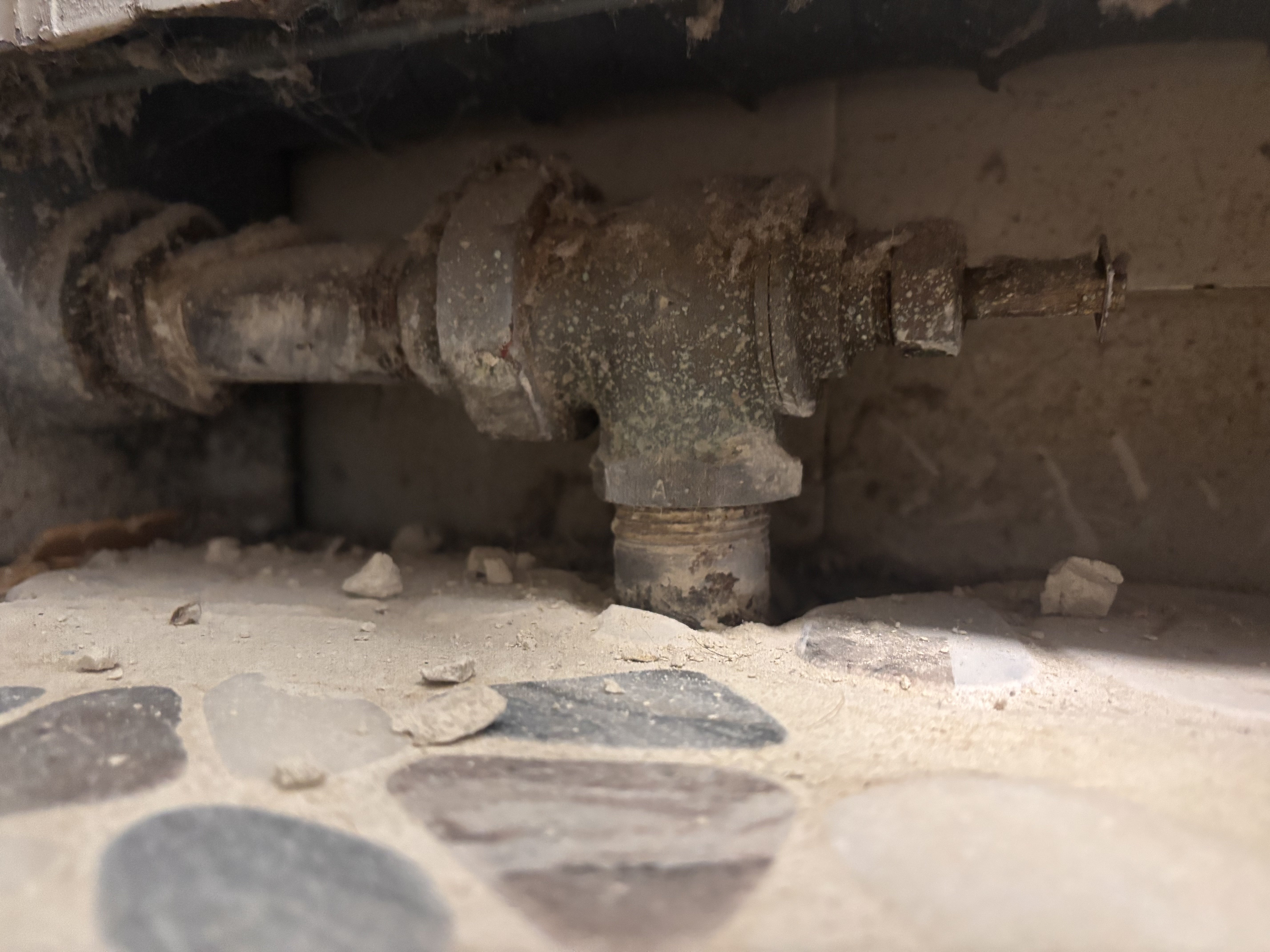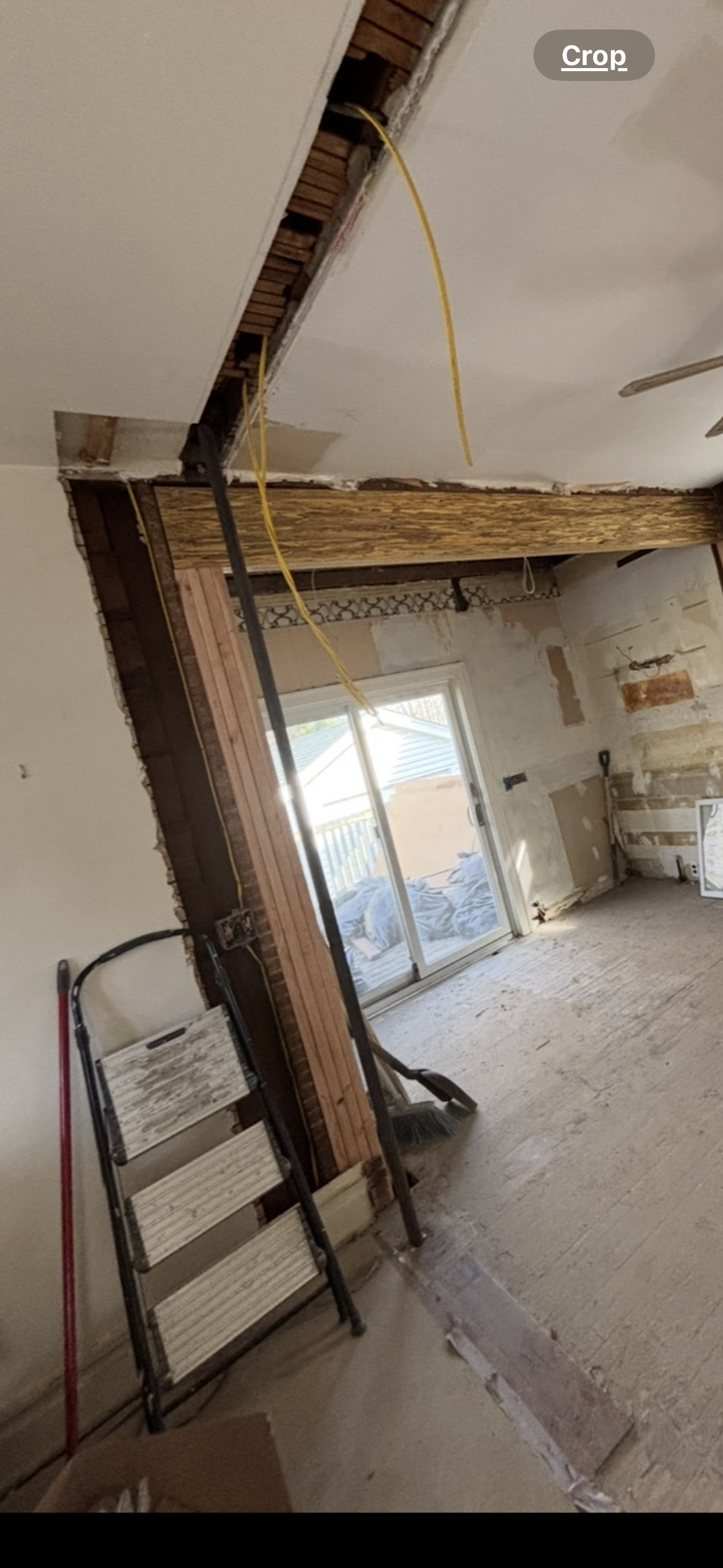Water hammer in steam system
recently moved into an older home (built 1907) with steam heating system. Recently had boiler serviced. Did a bunch of renovations including taking down a non-load bearing wall, which one of the steam pipes to our upstairs needed to be moved as a result. Had the pipe moved into the wall. This pipe I believe supplies the radiators in both our upstairs bathroom and a bedroom. Have only lived here for several months so the heat is only really running over the past couple weeks or so as it starts to get cold. Have been having extreme water hammer in the bedroom and bathroom since turning on the heat, and this usually happens within the first couple minutes of the heat kicking on. Radiators on first floor heat well and work well without issue. Other radiator in our bedroom is fine. It’s just the 2 that are coming from that pipe that was moved that supply the bathroom and small bedroom. I find it hard to believe the owner before us had dealt with this before, so my concern is that maybe the pitch of the new pipe that was moved is off? It’s buried in the wall so hard to say. I can see where he rerouted the pipe in the basement and he used copper, not sure if that’s relevant. But I can’t tell what the pitch of the pipe looks like inside the wall. Tried to pitch the radiator which didn’t help much. Got new air vents as well and no luck. Trying to figure out next steps from here without having to open up the wall again. It’s so severe I’m considering capping off that pipe in the basement and using a space heater. Thanks.
Comments
-
-
what pictures do you need exactly so I can post here
0 -
We can't see inside the wall but pictures of the pipe where it was relocated in the basement and show the two radiators upstairs especially in relation to each other may give us some clues.
They should not have used copper with steam
0 -
As @EBEBRATT-Ed said, what you are hearing is almost certainly a pipe pitch problem — particularly given the timing (early in the cycle) and the copper pipe. What happens is that as the steam comes up, it hits that copper and condenses like mad, lots of water, the pipe pitch is either inadequate or just wrong, the condensate is propelled along to the next elbow and whang.
May be a bit difficult to fix without finding the offending pipe. Which may be buried in the wall….
Br. Jamie, osb
Building superintendent/caretaker, 7200 sq. ft. historic house museum with dependencies in New England0 -
see pics attached
1: where black pipe went to copper (basement)2: copper being rerouted upstairs (basement)
3: bathroom radiator - this is the one making all the banging noise when heat starts up.
4: radiator in bedroom. Just on the other side of the wall is the white radiator in the bathroom in prior photo.
5: I retitled bathroom. Supply valve for bathroom. Is mortar too close to where the radiator comes thru floor it’s not allowing for contraction/expansion?0 -
Even a minor sag can cause water to lie in the pipe instead of draining back to the boiler, and between calls for heat, that water cools down and then on the next call for heat, the steam will hit it and cause hammer until the pool of water is heated enough that it lets the steam pass without collapsing it.
I'm not as concerned about copper pipes as a lot of people here. Both copper and steel will condense a lot of steam when they are cold, that's inescapable, and the pipes and system can handle it.
Interestingly, the copper pipes will condense less for a time since they will heat up a lot faster than steel pipes, having a lot less mass after all.
Then when they are hot, they will condense a lot less than when they are cold (both copper and steel). Copper pipes will more readily conduct heat to the air around them I guess, but it's a pretty trivial difference to my mind. Both types of pipe are condensing a LOT less after they are hot then when they are cold.
NJ Steam Homeowner.
Free NJ and remote steam advice: https://heatinghelp.com/find-a-contractor/detail/new-jersey-steam-help/
See my sight glass boiler videos: https://bit.ly/3sZW1el0 -
In my opinion the copper pipe diameter is far too small and you will end up getting water hammer because of it. The mains and risers have to be large enough in a one-pipe system to support steam flowing and condensate flowing counter to the steam. One rides in the upper portion of the pipe, the other in the lower portion. Specifically in the first picture you linked.
If I am mistaken and the pipe is indeed large enough (my first guess is its too small just by eye), then the next reason would be as people say, a pitch problem.
You will have to check that you have proper pitch back to the boiler and you will also want to check that your rad supply valves are valved fully open and that your radiators have roughly a 1/8 - 1/4 bubble of pitch on a level back towards the rad supply valve.
You can shim the rads accordingly on the two feet opposite the rad supply valves to accomplish this.
0 -
so either changing the pipe diameter, or the pitch, or both, would require opening the wall back up to make the change it seems.
Yes. The grey radiator is shimmed towards the supply valve. The white one is hard to get something under since it’s such a tight space.
what are people’s thoughts on the grout of the bathroom floor being too close to the pipe exiting the floor , possibly limiting the contraction and expansion of the pipe? Make a difference?0 -
Don't worry about the pitch of the radiator. It doesn't matter. Just keep them level.
I don't think your grout is restricting any contraction or expansion.
You might try to lift the banging radiators evenly a little at a time, like 1/4" or 1/2" per week. This can "pull" a sag out of the riser pipe or at least improve the situation.
I had this issue and doing that definitely helped, but in the end I ran a new pipe.
NJ Steam Homeowner.
Free NJ and remote steam advice: https://heatinghelp.com/find-a-contractor/detail/new-jersey-steam-help/
See my sight glass boiler videos: https://bit.ly/3sZW1el0 -
My concern over the copper is not based on the copper itself as it is probably fine. My concern over using copper is that it "points to" may have been installed by a "hot water plumber" versus a "steam fitter" who would likely stick to black pipe. Hot water plumber may not be aware of or take pipe pitch seriously
The change in diameter from Steel to Copper of the same size is not an issue.
Can't tell from pics but the copper pipe in the second picture running back to the riser probably is run flat as there is no swing joint. The hammer could be in that location. The bottom of the riser should have a swing joint and be pitched back to the boiler. You can get away with 1 pipe being flat but if you have 2 pipes flat that causes issues especially if the rises goes up a distance as you will get more condensate in the riser flowing down faster on a cold start
The Gorton is a larger vent maybe slowing the venting could calm things down and make it workable.
Do you know the size of the copper pipe and what the EDR of both radiators is? Looks like maybe 1 1/4" which is good for 55EDR 1" is good for 25EDR?
1 -
tried closing the air vent to smallest possible opening which didn’t help much
How should the pipes be reconfigured (as alluded to in second photo) in order to correct it?Not sure of copper size. I can look when get home today.
0 -
@EBEBRATT-Ed said:
My concern over the copper is not based on the copper itself as it is probably fine. My concern over using copper is that it "points to" may have been installed by a "hot water plumber" versus a "steam fitter" who would likely stick to black pipe. Hot water plumber may not be aware of or take pipe pitch seriously
Well said
NJ Steam Homeowner.
Free NJ and remote steam advice: https://heatinghelp.com/find-a-contractor/detail/new-jersey-steam-help/
See my sight glass boiler videos: https://bit.ly/3sZW1el0 -
You have two short horizontal sections of copper pipe there joined by an elbow. Is there a way that you can increase the pitch on either or both of them — preferably the second one in line? I think that that is where your problem is, and the story goes like this: steam starts into those pipes and then up the riser. It condenses, as it naturally will, in the riser and drips back down to the bottom of the riser — and then tries to flow back to the boiler through those two horizontal sections. But — steam is trying to go the other way, at speed, building waves or even slugs of condensate which hit the two elbows.
Br. Jamie, osb
Building superintendent/caretaker, 7200 sq. ft. historic house museum with dependencies in New England0 -
ok, I can try to increase the pitch. Any tips on that since they’re soldered?
Put a new swing joint on the 90 coming from the riser?
0 -
Check the pitch first before you get carried away. I could be wrong — I have been before. On a short section of pipe like that I'd want to see at least a half inch drop back towards the main.
How to pipe it? Not sure how I'd do it… Get creative.
Br. Jamie, osb
Building superintendent/caretaker, 7200 sq. ft. historic house museum with dependencies in New England1 -
found a photo of when the pipe was moved. Not sure if this provides any insight. You can see the old pipe running up to the second floor and I believe it elbows to the right to go where the radiator is. The space between the studs where the electrical switch is is where the new pipe was ran, however I don’t have photos of this. Looks like there would need to be 3 elbows in order to connect to the riser.
0 -
Oh dear. Sounds like you have some "horizontal" sections in the floor upstairs now… and any one of them could be your problem as well. When the piping upstairs was extended to meet the new riser, how was that done? If the new piping was done in copper, is the copper at least as large a diameter as the old iron pipe? How was it connected?
Br. Jamie, osb
Building superintendent/caretaker, 7200 sq. ft. historic house museum with dependencies in New England0 -
honestly not sure. Had a plumber who was doing some work and asked if he could do that too. This was before i started educating myself on steam. I would imagine it’s all soldered copper. It’s at least 1” now, not sure what the black pipe was previously. But yes, lots of horizontal sections probably.
0 -
And maybe some reverse pitch sections too which would be even worse. We see this a lot with renovations by plumbers who don't know steam.
NJ Steam Homeowner.
Free NJ and remote steam advice: https://heatinghelp.com/find-a-contractor/detail/new-jersey-steam-help/
See my sight glass boiler videos: https://bit.ly/3sZW1el0 -
seems like the only option is to open up the wall? Even if we did that we’d have to figure out a way to run the pipe without having those horizontal sections, which may be tricky just based on where the radiator is in relation to the riser.
our heat is on now, but not cycling much since it doesn’t get too cold throughout the day yet. I’m located in New Jersey. Will this get worse as it gets colder? Or better? If the pipes are warm more frequently wouldn’t the hammer be less (I. E. If it’s cycling more frequently as opposed to now). Crazy to put a valve on the riser for now until it gets colder and the boiler is cycling more frequently and keeping pipes warmer?? And use a space heater in the meantime?
Is this salvageable? Or should I consider another heating source for the bedroom/bathroom. I love the steam and would love to keep it if possible
0 -
If the pipes are warm more frequently wouldn’t the hammer be less (I. E. If it’s cycling more frequently as opposed to now).
Yes it should be less.
We can't tell from here how bad it will be or how badly piped it is. Yes, to really fix it you may have to open the wall again.
You don't need to put a valve on the riser. Just disable the radiator by rotating its vent upside-down if you want to
NJ Steam Homeowner.
Free NJ and remote steam advice: https://heatinghelp.com/find-a-contractor/detail/new-jersey-steam-help/
See my sight glass boiler videos: https://bit.ly/3sZW1el0
Categories
- All Categories
- 87.3K THE MAIN WALL
- 3.2K A-C, Heat Pumps & Refrigeration
- 61 Biomass
- 429 Carbon Monoxide Awareness
- 120 Chimneys & Flues
- 2.1K Domestic Hot Water
- 5.8K Gas Heating
- 114 Geothermal
- 166 Indoor-Air Quality
- 3.7K Oil Heating
- 77 Pipe Deterioration
- 1K Plumbing
- 6.5K Radiant Heating
- 395 Solar
- 15.7K Strictly Steam
- 3.4K Thermostats and Controls
- 56 Water Quality
- 51 Industry Classes
- 50 Job Opportunities
- 18 Recall Announcements
